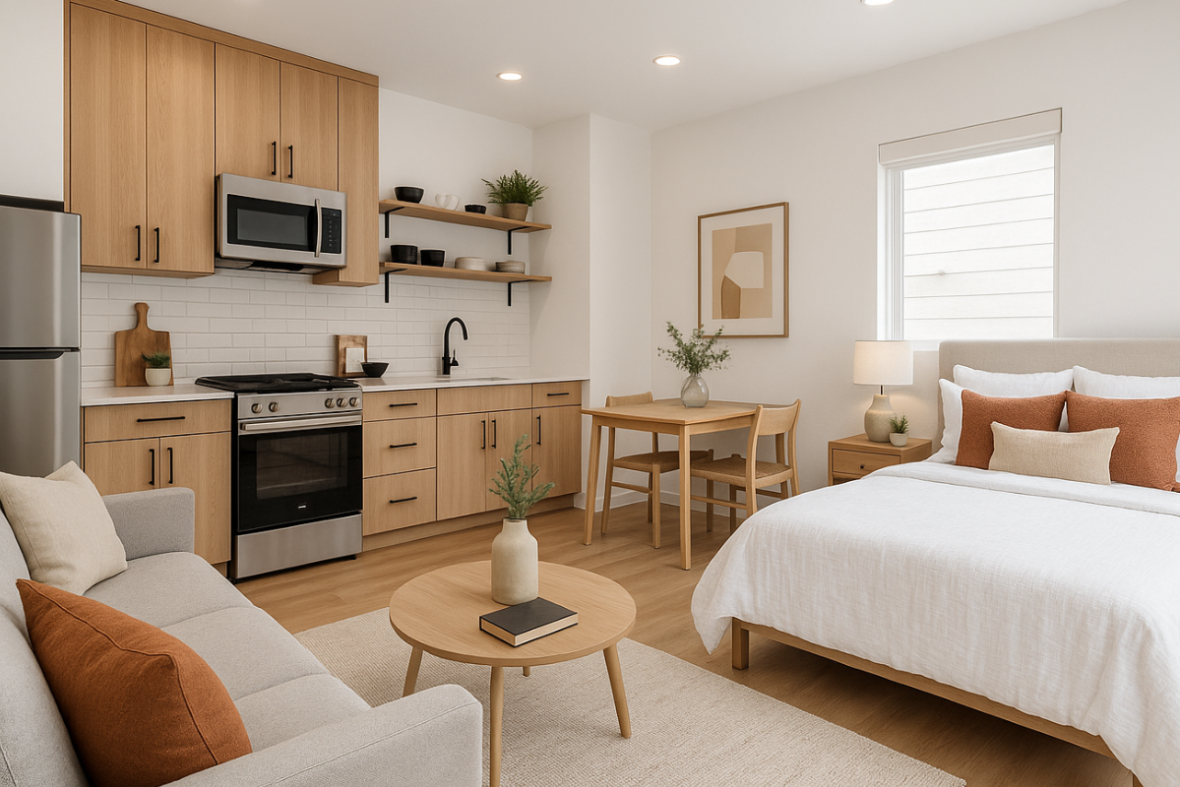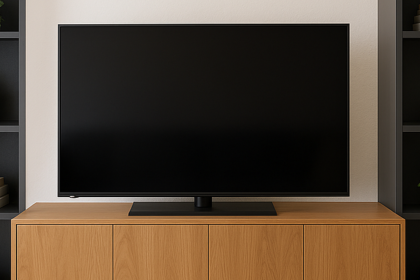I have designed around six unique ADU interiors over the past few years, and each project has shown me how creative thinking turns a small footprint into a home that feels both comfortable and stylish. Accessory Dwelling Units (ADUs) are gaining attention nationwide as homeowners search for flexible spaces for rental income, multigenerational living, or private retreats. Thoughtful interior design is the difference between a cramped layout and a space that feels airy, functional, and beautiful.
Understanding ADUs and Their Appeal
An Accessory Dwelling Unit is a fully independent living space on the same property as a primary home. These units include their own kitchen, bathroom, and living area, which makes them ideal for guests, renters, or extended family members. Over time, I’ve worked on a variety of ADU types:
- Detached units built from the ground up in backyards.
- Garage conversions that transform underused structures into welcoming homes.
- Basement apartments that make the most of existing square footage.
- Bump-outs or additions that create a self-contained wing.
Homeowners turn to ADUs for many reasons: creating an income stream, offering independence to aging parents, or simply adding flexible living space. Their growing popularity means good design is more important than ever.
My Design Philosophy
Each of my six ADU projects started with the same goal—maximize space while keeping the home stylish and inviting. I focus on a combination of function, flow, and personality. Before choosing finishes or furniture, I study how the future residents will move through the space and what daily activities need to fit within the layout. This helps every inch work harder without feeling crowded.
Layouts that Work
Open layouts are the backbone of small-space living. Removing unnecessary walls allows light and air to circulate freely. In many of my projects, I use furniture placement, rugs, and lighting to define separate zones for sleeping, cooking, and lounging without closing the space off.
Studio configurations can feel generous when designed thoughtfully. For clients who need privacy, I’ve created one-bedroom layouts that keep a sense of openness while providing a quiet retreat.
Multifunctional Furniture and Storage
In ADUs, furniture needs to do more than one job. I often recommend:
- Murphy beds or wall beds that fold away to create living space during the day.
- Fold-out dining tables that double as workstations.
- Modular sectionals with hidden storage and the ability to convert into guest beds.
For storage, vertical solutions are essential. Tall cabinets, floating shelves, and built-in benches add capacity without shrinking the footprint. Under-bed compartments and cleverly designed closets keep belongings out of sight and maintain a calm, uncluttered look.
Lighting that Expands Space
Lighting sets the mood and shapes how big or small a room feels. Natural light is always the first priority. Large windows, sliding glass doors, and strategically placed skylights flood interiors with daylight and create a cheerful, spacious feel.
Layered artificial lighting then adds depth and flexibility. Overhead fixtures provide general brightness, while under-cabinet strips, bedside sconces, and well-placed floor lamps supply targeted light for reading, cooking, or relaxing.
Colors and Materials that Brighten and Endure
I often use light, neutral color palettes—soft whites, warm beiges, pale grays—because they reflect light and make rooms appear larger. To prevent the space from feeling flat, I add texture with natural wood finishes, patterned textiles, or accent walls in subtle tones.
Durable materials are essential. Quartz countertops, luxury vinyl plank flooring, and cabinets with easy-to-clean finishes keep the interior looking fresh for years. These choices not only look good but also stand up to everyday use.
Style and Cohesion with the Main Home
An ADU should feel like a natural extension of the primary residence. When I design, I pay attention to architectural details and color palettes that tie the two together. If the main house has a modern farmhouse vibe, I echo that with black hardware, rustic wood elements, and crisp white walls. For a Spanish-style home, I might incorporate arched doorways, terracotta tile, and wrought-iron accents.
Designing for Long-Term Flexibility
One of the most rewarding aspects of ADU design is building spaces that can adapt over time. I always consider accessibility and universal design. Walk-in showers with grab bars, no-step entries, wider doorways, and lever-style handles make the home easy to navigate for people of all ages. These choices add value and allow residents to age in place comfortably.
Technology and Smart Features
Small homes benefit from smart technology. I integrate solutions like voice-controlled lighting, energy-efficient thermostats, and compact appliances such as two-in-one washer-dryers. Wall-mounted TVs and built-in charging stations save space and reduce clutter, making the unit feel streamlined and modern.
Outdoor Living as an Extension
When possible, I design outdoor areas that expand the living space. A small deck, patio, or covered porch can become a natural extension of the interior. By using similar materials and color schemes outdoors, I create a seamless transition between inside and outside, making the ADU feel larger and more inviting.
Why Good Design Pays Off
Well-planned interiors increase property value and open up new possibilities for homeowners. My clients have used their ADUs for rental income, private offices, guest houses, and even long-term housing for relatives. Good design not only boosts resale value but also creates flexible spaces that adapt to changing family needs.
After working on six ADU interiors, I’ve seen how smart design transforms small structures into homes that feel far bigger than their square footage. Every detail—from the layout and lighting to the color palette and storage—affects how people experience the space.
Final Thoughts
An ADU is more than a compact dwelling. It can be a stylish, welcoming retreat that fits seamlessly into a property and a lifestyle. Thoughtful interior design ensures every square foot counts, making life more comfortable and the investment more rewarding.


